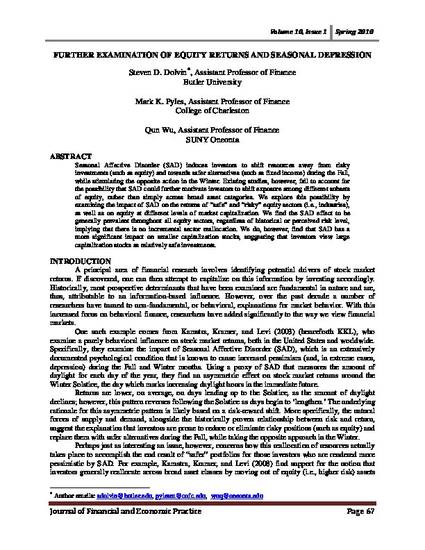
Seasonal Affective Disorder (SAD) induces investors to shift resources away from risky investments (such as equity) and towards safer alternatives (such as fixed income) during the Fall, while stimulating the opposite action in the Winter. Existing studies, however, fail to account for the possibility that SAD could further motivate investors to shift exposure among different subsets of equity, rather than simply across broad asset categories. We explore this possibility by examining the impact of SAD on the returns of “safe” and “risky” equity sectors (i.e., industries), as well as on equity at different levels of market capitalization. We find the SAD effect to be generally prevalent throughout all equity sectors, regardless of historical or perceived risk level, implying that there is no incremental sector reallocation. We do, however, find that SAD has a more significant impact on smaller capitalization stocks, suggesting that investors view large capitalization stocks as relatively safe investments.
This article was originally published in Journal of Financial and Economic Practice Issues,2010, Volume 1.
Available at: http://works.bepress.com/steven_dolvin/26/
